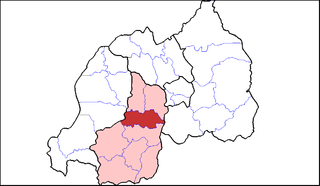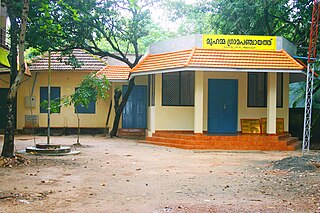
The Greater London Authority (GLA), known colloquially as City Hall, is the devolved regional governance body of London, with jurisdiction over both the City of London and the ceremonial county of Greater London. It consists of two political branches: the executive Mayoralty and the 25-member London Assembly, which serves as a means of checks and balances on the former. Since May 2016, both branches have been under the control of the London Labour Party. The authority was established in 2000, following a local referendum, and derives most of its powers from the Greater London Authority Act 1999 and the Greater London Authority Act 2007.
A local government is a form of public administration which, in a majority of contexts, exists as the lowest tier of administration within a given state. The term is used to contrast with offices at state level, which are referred to as the central government, national government, or federal government and also to supranational government which deals with governing institutions between states. Local governments generally act within powers delegated to them by legislation or directives of the higher level of government. In federal states, local government generally comprises the third tier of government, whereas in unitary states, local government usually occupies the second or third tier of government, often with greater powers than higher-level administrative divisions.

Elections in Rwanda take place within the framework of a multi-party democracy and a presidential system. The President and majority of members of the Chamber of Deputies are directly elected, whilst the Senate is indirectly elected and partly appointed.

Rural development is the process of improving the quality of life and economic well-being of people living in rural areas, often relatively isolated and sparsely populated areas.

According to the Organic Law of Regional Governments, the regions are, with the departments, the first-level administrative subdivisions of Peru. Since its 1821 independence, Peru had been divided into departments but faced the problem of increasing centralization of political and economic power in its capital, Lima.

Ruhango is a district (akarere) in Southern Province, Rwanda. Its capital is Ruhango town, a large settlement on the road between Gitarama and Butare.
Gasabo is a district (akarere) in Kigali Province, Rwanda. Its capital is in Kacyiru Sector, the suburb neighboring the presidential office and number of Rwanda different ministry offices. The district also includes large areas of the city itself, including Kacyiru, Remera, Nyarutarama and Kimihurura.

Nyarugenge is a district (akarere) in Kigali Province, Rwanda. Its heart is the city centre of Kigali, and contains most of the city's businesses.
Nyamasheke is a district (akarere) in Western Province, Rwanda. Its capital is Nyamasheke town (Kagano).

Rutsiro is a district (akarere) in Western Province, Rwanda. Its headquarter is located in Gihango sector.

Water supply and sanitation in Rwanda is characterized by a clear government policy and significant donor support. In response to poor sustainability of rural water systems and poor service quality, in 2002 local government in the Northern Byumba Province contracted out service provision to the local private sector in a form of public–private partnership. Support for public-private partnerships became a government policy in 2004 and locally initiated public-private partnerships spread rapidly, covering 25% of rural water systems as of 2007.
Kenya’s health care system is structured in a step-wise manner so that complicated cases are referred to a higher level. Gaps in the system are filled by private and church run units.
Civil service reform is a deliberate action to improve the efficiency, effectiveness, professionalism, representativity and democratic character of a civil service, with a view to promoting better delivery of public goods and services, with increased accountability. Such actions can include data gathering and analysis, organizational restructuring, improving human resource management and training, enhancing pay and benefits while assuring sustainability under overall fiscal constraints, and strengthening measures for performance management, public participation, transparency, and combating corruption.

Kerala is a state in the southernmost part of India. Kerala, with appreciative development indicators comparable to developed countries, has been experimenting with decentralization and participatory local democracy, ultimately aimed at realization of the constitutional goal of establishing genuine "institutions of local self government" since the enactment of Kerala Panchayat Raj Act & The Kerala Municipality Act in the year 1994.

Sectors are the third level administrative subdivision in Rwanda. The Provinces of Rwanda are subdivided into 30 districts. Each district is in turn divided into sectors. There are 416 Sectors. This entire administrative structure is undergoing a process of decentralisation – devolving greater authority to local governments and municipalities – following an administrative reorganisation begun in 2002.

Liberia is divided into fifteen first-level administrative divisions called counties, which, in turn, are subdivided into a total of 90 second-level administrative divisions called districts and further subdivided into third-level administrative divisions called clans.
The local government in Ukraine consists of two systems based on administrative divisions of Ukraine. There are 24 oblasts, the Autonomous Republic of Crimea, and two city councils with special status (regions), with each region further divided into raions (districts) and city councils of regional significance and then smaller cities of raion (district) significance, settlements, villages.

The Republic of Cameroon is a decentralized unitary state. Cameroon is ruled by a dictatorship.
The Ministry of Digital Governance is a government department of Greece. It was initially formed on 27 June 2011 as the Ministry of Administrative Reform and Electronic Governance. On 27 January 2015, it was merged with the Ministry of the Interior and the Ministry of Public Order and Citizen Protection to form the Ministry of the Interior and Administrative Reorganization. It was revived as two distinct ministries on 5 November 2016: the Ministry of Administrative Reorganization and the Ministry of Digital Policy, Telecommunications and Media. The former was reabsorbed by the Ministry of the Interior on 9 July 2019, while the latter was renamed the Ministry of Digital Governance. The incumbent minister in the Cabinet of Kyriakos Mitsotakis is Kyriakos Pierrakakis, who also serves as one of two Ministers of State.

The Panchayat raj is a political system, originating from the Indian subcontinent, found mainly in India, Pakistan, Bangladesh, Sri Lanka, and Nepal. It is the oldest system of local government in the Indian subcontinent, and historical mentions date to the 250 CE period. The word raj means "rule" and panchayat means "assembly" (ayat) of five (panch). Traditionally panchayats consisted of wise and respected elders chosen and accepted by the local community. However, there were varying forms of such assemblies. Traditionally, these assemblies settled disputes between individuals and between villages.













